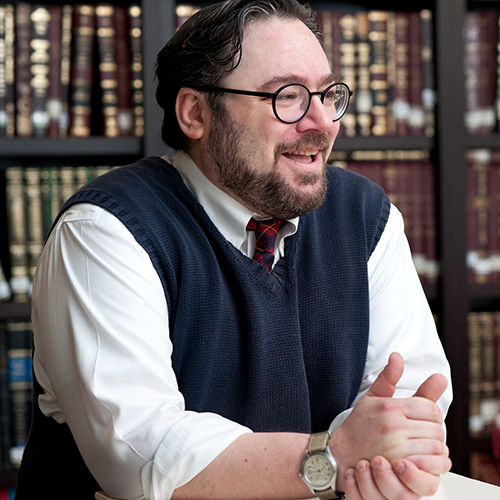Gender Identity in Rabbinic Literature

Download Sources
Part of the series, The Space in Between: Thresholds and Borders in Jewish Life and Thought
With Dr. Marcus Mordecai Schwartz, Assistant Professor, Talmud and Rabbinics, JTS
Great fans of ambiguity, the sages of the Mishnah and the Talmud loved to problematize what people of their day considered the most deeply ingrained of binaries, including gender and sex identity. For them, human understandings were imperfect, and every perspective was up for debate. Torah was Divine and perfect, but its interpreters were not. Long ago, our sages debated questions of sex difference and the extent of our capacity to know what we are. We explore some of these debates and ask if they still hold relevance for us.
Lecture Notes
Dr Mordecai Schwartz introduced the story of the creation of humans through two images, one from the Sarejevo Haggadah and the other from a ______ which depict Eve emerging from Adam. He used these images to set up the rabbinic understanding of creation and particularly gender identity.
He described Aristophanes description of gender in Plato’s Symposium in which there were three types of genders—male-female, female-female, male-male—that were separated from each other after a failed revolt against the gods. This story existed and could have been know to the rabbis while the Talmud was being constructed. The rabbinic formulation in Bereshit Rabbah shows a different sort of response. The separation was not a punishment, but proart of the act of creation itself. Bo
Through the lecture, he introduced three separate theories of gender in rabbinic literature around creation: 1) Binary view with two genders being separated from the beginning; 2) Body made as one and then separated; and 3) the first human was in a variable, flexible body, in which genetalia and gender were added later in creation.
Suggested Sources
The Adam and Eve Story: Eve Came From Where? Bibilcal Archeology Society
The Origins of the Passover Seder by Baruch Bokser
Carnal Israel by Daniel Boyarin
“Origin of Love” from Hedwig and the Angry Inch
About the Series
We are living in an undefined time: our daily existence is no longer dominated by the pandemic, yet neither have we settled into a new normal. This sense of being in transition—neither here nor there— can feel destabilizing; but is the time in between really temporary, or are we always living in between moments, identities, and phases of life?
In this series, JTS scholars will delve into the idea of liminality—the time or space in between—which we encounter often in Jewish ritual, identity, law, and life. Join us to consider what these many manifestations of “in-between-ness” can teach us about ourselves and about Judaism, and to explore how we might find strength and meaning in an orientation not of “either/or” but of “both/and.”
We will explore themes of borders, thresholds and transitions as they pertain to the story of Creation, gender, conversion, birth and death, the duality of living as a Jew in America, and more.
SPONSOR A SESSION
At JTS, we are committed to providing the Jewish community with outstanding classes in Judaic studies. We hope you will partner with us so that we can continue to do so. Did you know that you can sponsor a learning session to honor a loved one, celebrate an occasion, or commemorate a yahrzeit? You can find sponsorship information here.



